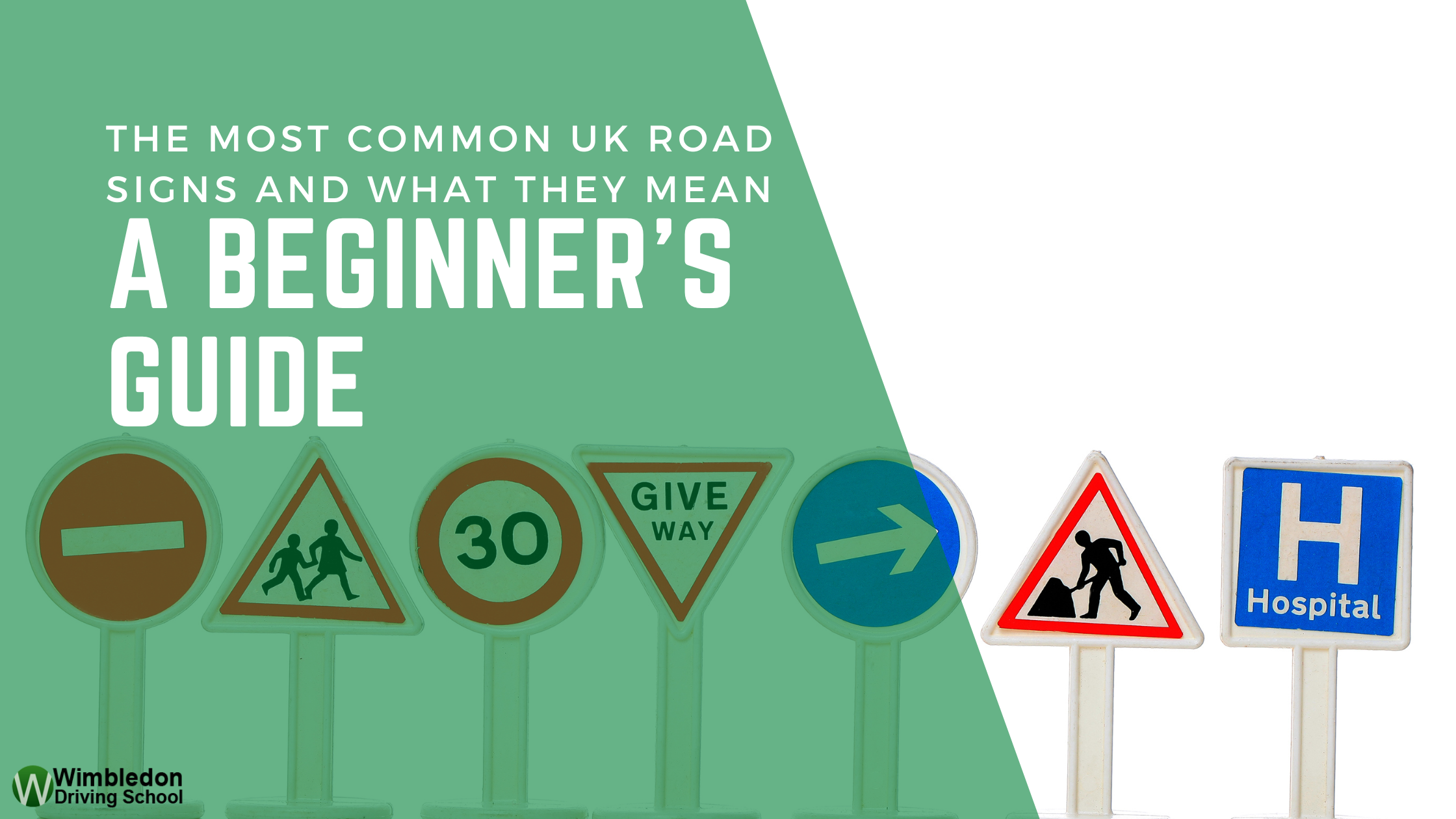If you’re just starting to drive in the UK, understanding the various road signs you’ll encounter can be overwhelming. From speed limits to warning signs, there are a lot of different signs to learn. In this beginner’s guide, we’ll go over the most common UK road signs and what they mean.
Stop Signs
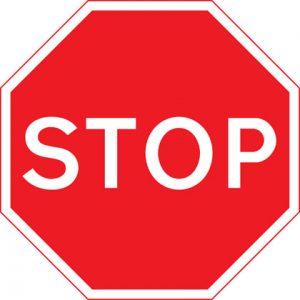 Stop signs are a universal symbol of road safety, recognised across the world by their octagonal shape and vibrant red background. In the UK, they play a crucial role in keeping drivers, cyclists, and pedestrians safe on the roads.
Stop signs are a universal symbol of road safety, recognised across the world by their octagonal shape and vibrant red background. In the UK, they play a crucial role in keeping drivers, cyclists, and pedestrians safe on the roads.
When you come across a stop sign, it means that you must come to a complete stop at the marked stop line or the point closest to the junction where you can see traffic without obstructing other vehicles. It’s important to look both ways before proceeding to ensure that it is safe to do so.
Stop signs are often found at busy junctions or areas where there is a high risk of accidents, such as schools or residential neighbourhoods. By obeying stop signs, drivers can help prevent accidents and keep everyone on the road safe.
It’s important to note that stop signs are not to be taken lightly. Failing to stop at a stop sign can result in serious consequences, including fines, points on your license, and even accidents. So, the next time you come across a stop sign, remember to obey it and take the necessary precautions to keep yourself and others safe on the road.
Speed Limit Signs
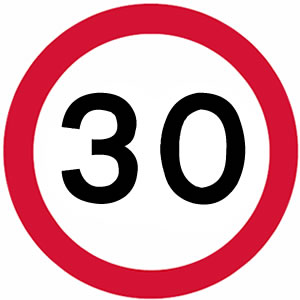 Speed limit signs are an important part of road safety in the UK. They are circular in shape with a red outer ring and a number in the centre, indicating the maximum speed limit for that road. It’s crucial to pay attention to these signs, as exceeding the speed limit can lead to accidents and put yourself and others in danger.
Speed limit signs are an important part of road safety in the UK. They are circular in shape with a red outer ring and a number in the centre, indicating the maximum speed limit for that road. It’s crucial to pay attention to these signs, as exceeding the speed limit can lead to accidents and put yourself and others in danger.
It’s important to note that the speed limit indicated on the sign is the maximum allowed speed for that road. However, you are always free to drive slower if you feel it’s necessary, such as in adverse weather conditions or if the road is particularly busy.
Speed limit signs can vary depending on the type of road you’re driving on. For example, motorways have a maximum speed limit of 70 mph, while residential areas and school zones typically have lower limits.
It’s important to always obey the speed limit signs, as they are in place to keep everyone on the road safe. By driving within the speed limit, you reduce the risk of accidents and keep yourself and others out of harm’s way.
No Entry Signs
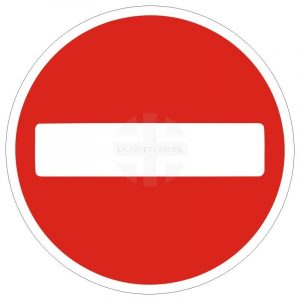 No entry signs are a crucial part of road safety in the UK. They are easily recognisable with their red circular shape and white horizontal bar, and they indicate that you cannot enter the road or path. If you come across a no entry sign, it’s important to find an alternative route to reach your destination.
No entry signs are a crucial part of road safety in the UK. They are easily recognisable with their red circular shape and white horizontal bar, and they indicate that you cannot enter the road or path. If you come across a no entry sign, it’s important to find an alternative route to reach your destination.
No entry signs are typically found at the entrance of one-way streets or areas where there is a high risk of accidents, such as construction zones. It’s important to always obey these signs, as entering a road or path marked with a no entry sign can lead to serious consequences, including fines, points on your license, and even accidents.
It’s important to pay attention to road signs and markings to ensure that you’re driving safely and responsibly. By obeying no entry signs, you can help prevent accidents and keep everyone on the road safe.
One-Way Signs
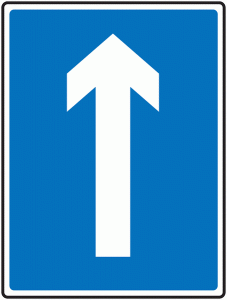 One-way signs are an important part of road safety in the UK. They are rectangular in shape with an arrow pointing in the direction of traffic flow, indicating that traffic can only flow in one direction.
One-way signs are an important part of road safety in the UK. They are rectangular in shape with an arrow pointing in the direction of traffic flow, indicating that traffic can only flow in one direction.
One-way signs are typically found on streets and roads where there is limited space for traffic or where there is a high risk of accidents. It’s important to always pay attention to these signs and follow the direction of traffic flow to ensure the safety of yourself and others on the road.
If you come across a one-way sign, it’s important to adjust your driving accordingly. Make sure to stay in the correct lane and avoid driving against the flow of traffic. By obeying one-way signs, you can help prevent accidents and keep everyone on the road safe.
Give Way Signs
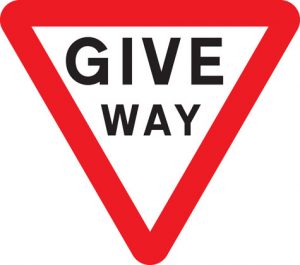 Give way signs are an essential part of road safety in the UK. They are easily recognisable with their inverted triangle shape, red border, and white background, and they indicate that you must give way to traffic on the main road ahead.
Give way signs are an essential part of road safety in the UK. They are easily recognisable with their inverted triangle shape, red border, and white background, and they indicate that you must give way to traffic on the main road ahead.
When you come across a give way sign, it’s important to slow down and be prepared to stop if necessary. Look both ways before proceeding, and make sure there is no traffic approaching from the main road. Once it is safe to do so, you can proceed.
Give way signs are typically found at junctions or areas where traffic merges onto a main road. By obeying these signs, you can help prevent accidents and keep everyone on the road safe.
It’s important to note that give way signs are not to be taken lightly. Failing to give way to traffic on the main road can result in serious consequences, including fines, points on your license, and even accidents. So, the next time you come across a give way sign, remember to obey it and take the necessary precautions to keep yourself and others safe on the road.
Roundabout Signs
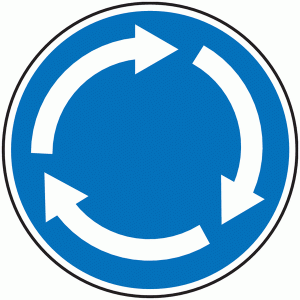 Roundabouts are a common sight on UK roads and are designed to keep traffic flowing smoothly and safely. They are circular junctions where traffic flows in a clockwise direction, and they are marked with an inverted triangular sign with a white background and a red border. Mini-roundabouts signs are circular with a blue background and arrows indicating the direction of circulation on the roundabout.
Roundabouts are a common sight on UK roads and are designed to keep traffic flowing smoothly and safely. They are circular junctions where traffic flows in a clockwise direction, and they are marked with an inverted triangular sign with a white background and a red border. Mini-roundabouts signs are circular with a blue background and arrows indicating the direction of circulation on the roundabout.
When approaching a roundabout, it’s important to pay attention to road markings and signs. You must give way to traffic already on the roundabout, but if there is no traffic on the roundabout, you can proceed.
It’s crucial to approach a roundabout at a safe speed and be prepared to stop if necessary. Look both ways before entering the roundabout, and make sure to indicate your intentions to other drivers. By following these simple rules, you can help prevent accidents and keep everyone on the road safe.
Roundabouts are a popular alternative to traditional intersections because they help reduce congestion and keep traffic moving. However, it’s important to remember that not all drivers are familiar with roundabouts, so always proceed with caution and be aware of other drivers’ actions.
No Parking Signs
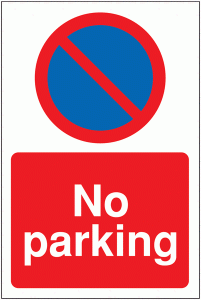 A no parking sign is a red circle with a blue background. It can either have one diagonal line through it which indicates that you cannot wait in the area marked by the sign, or it can have two crossing diagonal lines indicating no stopping (clearway).
A no parking sign is a red circle with a blue background. It can either have one diagonal line through it which indicates that you cannot wait in the area marked by the sign, or it can have two crossing diagonal lines indicating no stopping (clearway).
Pedestrian Crossing Signs
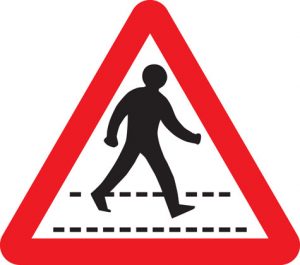 Pedestrian crossing signs are an important part of road safety in the UK. They indicate that there is a crossing for pedestrians ahead, and it’s crucial to pay attention to these signs to ensure the safety of both pedestrians and drivers.
Pedestrian crossing signs are an important part of road safety in the UK. They indicate that there is a crossing for pedestrians ahead, and it’s crucial to pay attention to these signs to ensure the safety of both pedestrians and drivers.
When approaching a pedestrian crossing, it’s important to slow down and be prepared to stop if necessary. Look out for people crossing the road and make sure to give them plenty of space. If there is a pedestrian waiting to cross, always stop and allow them to cross safely.
Pedestrian crossing signs come in various forms, with one specifically for zebra crossings and another for traffic signals that could be used before Pelican, Toucan, Pegasus, and Puffin crossings. It’s crucial to note that each type of crossing has its own set of rules and regulations, and it’s essential to pay attention to the road markings and signs to ensure safe and responsible driving.
It’s important to remember that pedestrians have the right of way at pedestrian crossings, and failing to stop for pedestrians can result in serious consequences, including fines, points on your license, and even accidents.
School Zone Signs
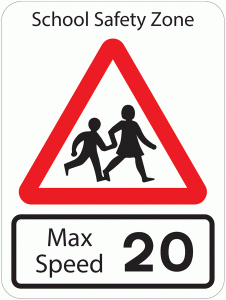 School zone signs are an important part of road safety in the UK. They indicate that you are entering a designated area where children may be crossing the road, and it’s crucial to pay attention to these signs to ensure the safety of both children and drivers.
School zone signs are an important part of road safety in the UK. They indicate that you are entering a designated area where children may be crossing the road, and it’s crucial to pay attention to these signs to ensure the safety of both children and drivers.
When approaching a school zone, it’s important to slow down and be extra cautious. Children may be crossing the road, and they can be unpredictable, so it’s important to always be alert and prepared to stop if necessary.
School zone signs are typically found near schools, nurseries, and other areas where children are likely to be present. It’s important to obey these signs and to avoid these areas within the time marked by the signs. .
It’s also important to remember that school zone signs are in place during specific times, usually during school drop-off and pick-up times. Make sure to pay attention to the time and comply with the signs when they are in effect.
Warning Signs
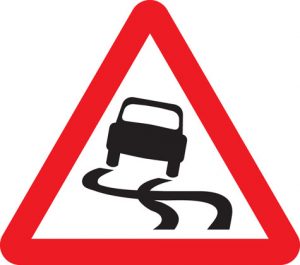 Warning signs are an important part of road safety in the UK. They are typically triangular and their purpose is to warn you of potential hazards ahead.
Warning signs are an important part of road safety in the UK. They are typically triangular and their purpose is to warn you of potential hazards ahead.
These signs can indicate a variety of potential dangers, such as sharp bends, steep hills, animals on the road, or other hazards. It’s crucial to pay attention to these signs and adjust your driving accordingly to ensure the safety of yourself and others on the road.
Warning signs are typically found in areas where there is a higher risk of accidents, such as construction zones, areas with limited visibility, or areas with high volumes of pedestrian traffic.
It’s important to always obey warning signs and adjust your driving accordingly. Failing to do so can lead to serious consequences, including fines, points on your license, and even accidents.

